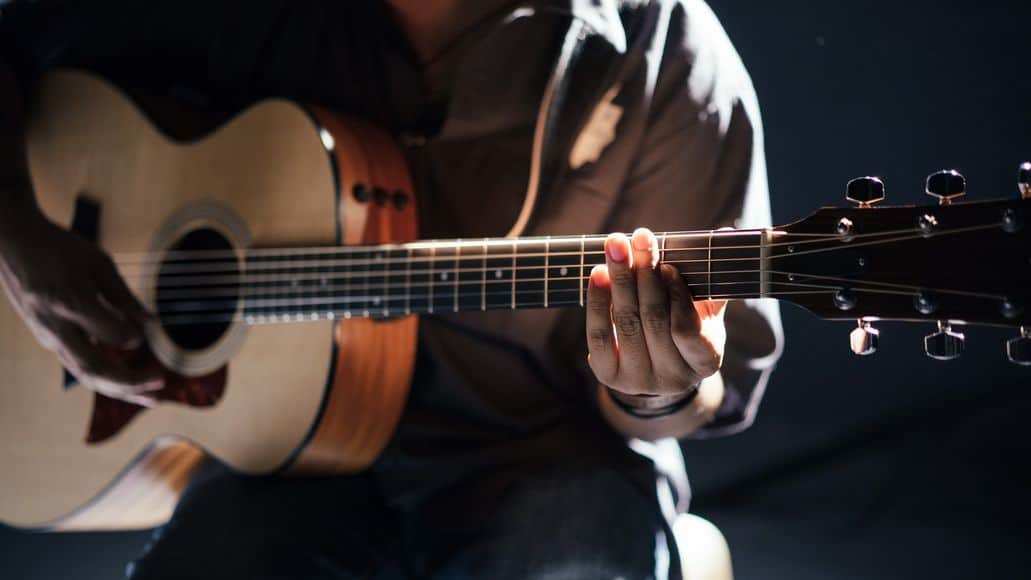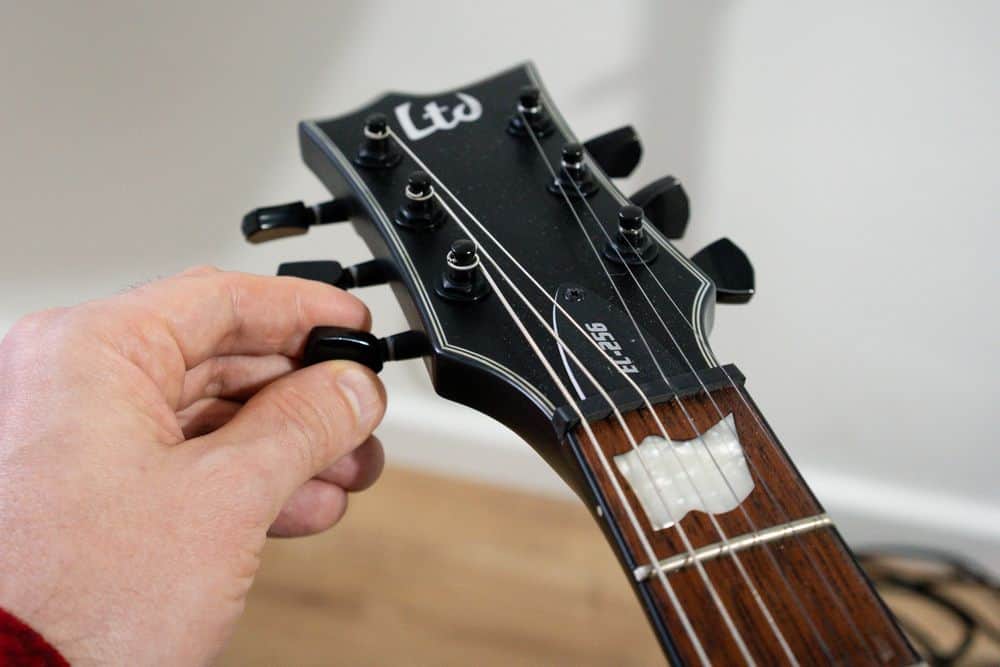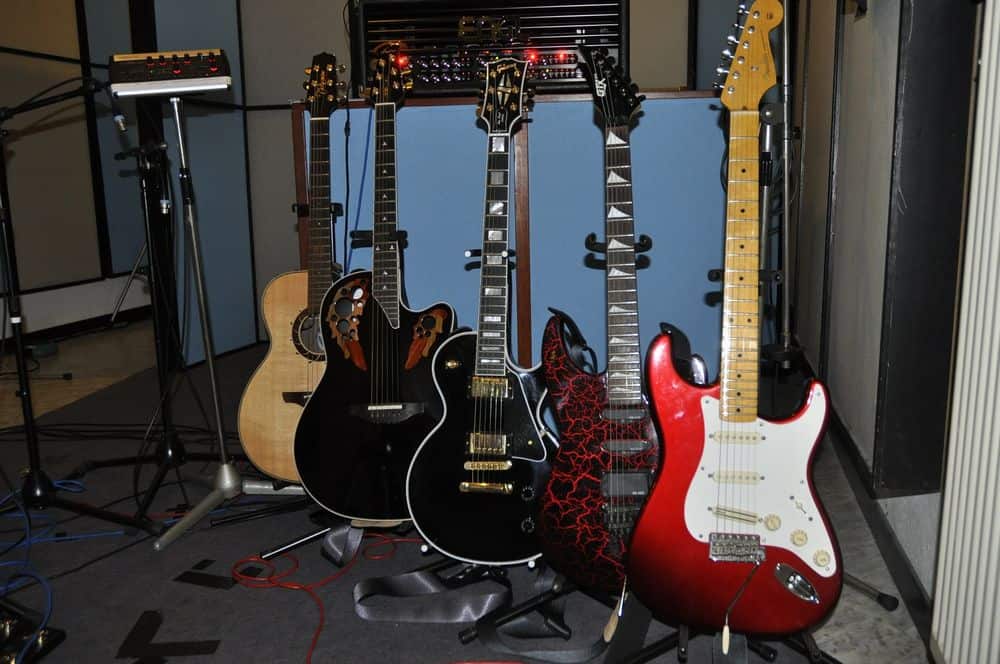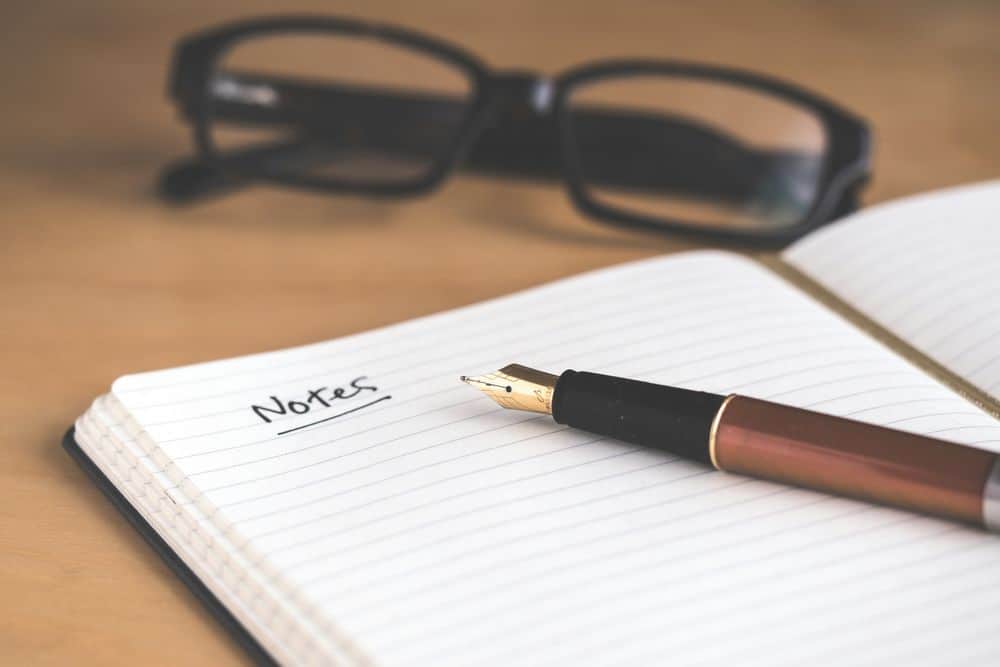 Learning guitar is not easy.
Learning guitar is not easy.
It takes along time, no matter what.
And if you’re teaching yourself it takes longer still.
That’s because you don’t know what works. You don’t know how to get better at guitar.
You end up wasting a lot of time on things that don’t work. Or just inefficient practice methods.
“I know, because I did all of that almost 20 years ago.
And now looking back, I can see what worked well and what didn’t. Below are my 6 top tips to help you get better at playing the guitar faster.
Table of Contents
How To Get Better At Playing Guitar
Read through the following tips and then try implementing them into your guitar practice. You will find that they help you improve your guitar playing faster than before.
Consistent Practice

The best advice I ever received as a beginner guitarist was to play my guitar whenever I could, even if it’s just for a few minutes. Before that, I thought that practicing 12+ hours over the weekends was the way to go.
But to my surprise, a single hour of practice every day of the week was much more effective in improving my playing. Than one or two long sessions.
The math behind this tip is simple. You can only be productive for so long. Trying to compensate for days lost without practicing by practicing for a long time at once isn’t an efficient method of improving your skills.
Take your guitar on your vacations, practice after school or working hours, and jam a bit before going to sleep, even if your sessions are only a few minutes long.
There is no need to make a “chore” out of it either. If you don’t feel like practicing scales or music theory, simply jam your favorite tunes or experiment with techniques that feel interesting.
As long as you’re playing a bit every day, you’ll see progress. And it’s always better if you’re having fun, not forcing yourself. In the end, that is the best way to learn guitar.
Listen To Diverse Music Styles

As a teenage guitarist, I used to live and breathe metal music. After exploring virtually every sub-genre metal had to offer, I quickly learned about shredding, multi-finger tapping, pinch harmonics, and everything you’d see James Hetfield or Chuck Schuldiner do.
This single-minded approach hurt me in the long run, since I didn’t know what guitarists from other genres were doing, let alone how they did it. The beautiful vibratos of rock musicians, the gentle action control of pop artists, and the funky chords jazz and blues guitarists are known for were all unknown to me.
That’s why I recommend expanding your listening playlists. Hear what other guitarists are doing, and you will probably get inspired to emulate what you’ve heard.
Learn Songs & How to Tune By Ear

When I first heard the intro solo in Scavenger of Human Sorrow, I wanted to be able to play it immediately. With digital tabs, this is now possible, even for beginners, since you can learn each note and practice the tune (or part) to oblivion until you get it right.
However, I believe this is a crutch that can hinder your long-term progress.
The more we rely on apps, tools, and programs when playing guitar, the less we are utilizing our core functions – especially the sense of hearing. If you’re not able to discern notes on your own, you likely won’t be able to catch your mistakes as you’re making them.
This may sound disheartening, but most guitarists have it easy, since their instruments have frets, which distribute the octave evenly across the string. Try a fretless instrument, and you’ll notice that the gap between two “frets” is more than half a semitone.
Whether you’re a beginner or an experienced player, I warmly recommend putting in an active effort to develop your hearing.
You can do this by covering songs by ear, humming the notes, and even by simply listening to tunes and compositions with complex, multi-layered structures. Be persistent, and you’ll gradually make progress.
Try Playing Other Guitars

Every guitar is different. Learning how different models sound, play, and feel will give you a better understanding of your own instrument. You don’t need to buy other guitars. Just visit a Music Center, or ask your friends to lend you their guitars for a while.
Just like professional chefs know how to operate with a barrage of unique knives and fishermen have multiple rods for various occasions, guitarists can expand their skill sets by becoming more familiar with other guitar types.
Don’t be afraid to pick up a headless, fretless, or a 7-string guitar. At their core, they are still just guitars. But the different tonewoods, scale lengths, actions, and hardware make them different to the one you own.
Test as many guitars as you can, and as soon as you return to your guitar, you’ll notice a change. For example, when I set out to buy a Schecter Demon 7, I noticed that its frets were significantly wider than those on my B.C. Rich Warlock.
After noodling on the former for about half an hour, I felt as if I could shred my on the Warlock several times faster than usual.
Take Notes On Your Progress

You don’t necessarily need to have a diary and record what you practice every day, but keeping tabs on techniques, skills, or songs that are giving you trouble could skyrocket your progress.
This is crucial for identifying areas where your guitar playing might be weak. More importantly, if you record every major mistake, you’ll begin to see patterns.
For me, chords were extremely difficult for the first few months. Writing their names and finger positions helped a lot.
Then it was finger tapping. I soon realized that I was constantly using the wrong fingers on my fretting hand and tested each, until I found the magic formula. And then it was shredding. Keeping track of scales and strumming patterns is far easier when it’s put on paper.
Play With Friends & Join Bands

No matter which techniques and practice methods you deploy on your own, nothing beats learning in a group setting. I spent years practicing in my bedroom, making slow but steady progress, but I rapidly advanced my guitar knowledge and skills as soon as I began playing with other musicians.
If you can’t find a band that needs another guitar, make your own. My first band was a group of complete beginners who knew next to nothing about music, let alone playing.
Each of us made different mistakes, which I believe is crucial. I didn’t need to repeat the mistakes my bandmates made, which accelerated my progress considerably.
More importantly, musicians in bands often have certain milestones to look forward to. Whether it be an upcoming gig, a long-anticipated tour, or a trip to the studio to record your songs. While practicing in your bedroom, there’s not much to prepare for other than getting through the usual routine.
In a band, you grow together, get inspired after every show, and are constantly experimenting with new techniques. Think of every bandmate as a teacher whom you don’t have to pay.
How To Get Better At Guitar: Final Thoughts
Becoming a better guitarist isn’t just about putting in the hours of practice—it’s about practicing smartly and diversifying your learning experiences. By incorporating consistent, daily practice sessions, no matter how short, you’ll maintain steady progress and keep your skills sharp.
Expanding your musical horizons by listening to a variety of music styles can inspire new techniques and approaches to your playing. Developing your ear by learning songs and tuning by ear will strengthen your fundamental musicianship.
Playing different guitars can offer new perspectives and adaptability, while taking notes on your progress helps you to identify patterns and areas for improvement. Finally, playing with friends and joining bands not only accelerates your learning but also provides invaluable social and performance experiences.
With dedication, patience, and these strategies on how to get better at guitar, you’ll see a marked improvement in your guitar playing. And hopefully, you’ll enjoy the journey as much as the destination.
Leave a Reply